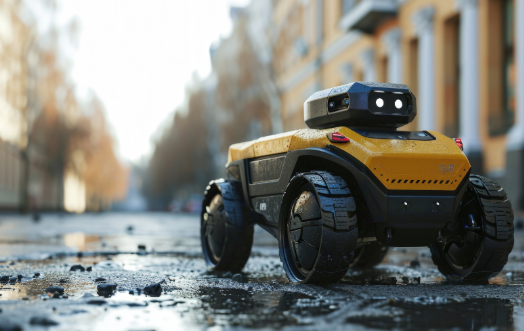A robot security guard does not have the luxury of smooth corridors and predictable pathways. Out in the open, it deals with uneven terrain, moving objects, and unpredictable elements. From patrolling car parks to securing industrial sites, these machines work tirelessly without blinking an eye—literally.
Robot surveillance has taken security up a notch, ensuring properties remain monitored without human limitations. These machines must navigate efficiently while avoiding obstacles that could disrupt their mission. So, how does an autonomous surveillance robot move with precision?
Anime-stop | fametrove | itchenwalk | effectandaffect | professionalsearch
How a Patrol Robot Sees the World
Sensors That Mimic Human Senses
An inspection robot does not rely on eyesight alone. Instead, it uses a mix of sensors that allow it to interpret its surroundings. Mapping technology helps map out environments in real time, providing accurate spatial awareness. Ultrasonic sensors detect nearby objects, ensuring the robot does not bump into walls, parked cars, or pedestrians.
Infrared sensors allow a patrol robot to operate at night, identifying heat signatures and movements that may indicate unusual activity. Cameras with machine learning software help in recognising obstacles, and distinguishing between a stationary pole and a moving individual.
Smart Pathfinding in real-time
Avoiding obstacles is one thing; choosing the best route is another. A patrol robot uses AI-driven algorithms to decide where to move next. If a delivery truck suddenly blocks its path, the robot does not freeze—it recalculates and finds an alternate way.
Pathfinding software helps an autonomous surveillance robot move smoothly. It does not need to pre-map every location. Instead, it learns and adapts, making adjustments as conditions change. This real-time decision-making is key to efficient patrolling.
Adapting to Outdoor Challenges
Uneven Terrain and Unexpected Objects
Unlike indoor robots that operate on flat surfaces, outdoor surveillance robots handle gravel, grass, and steep slopes. To maintain stability, they are fitted with all-terrain wheels or caterpillar tracks. These features give them better traction, ensuring they do not tip over on rough ground.
Obstacles like fallen branches, loose debris, or sudden puddles require quick thinking. Robot surveillance systems are programmed to detect these hazards and adjust their path without human intervention. With machine learning, these robots get better at identifying and avoiding obstacles over time.
Weathering the Storm
Rain, fog, and extreme temperatures pose challenges, but an inspection robot is built to endure. Many outdoor surveillance robots have weatherproof casings and sealed components, protecting them from moisture and dust. Some are equipped with heating or cooling systems to regulate internal temperatures, preventing hardware failures due to harsh weather conditions.
Low visibility does not stop these robots either. Thermal imaging allows them to detect movement even in heavy fog, while radar technology helps map surroundings in conditions where cameras might fail.
The Benefits of Obstacle-Aware Robot Surveillance
Reduced Risk of Collisions
Obstacle detection reduces the chances of a patrol robot running into objects, ensuring uninterrupted surveillance. This prevents costly repairs and maintains operational efficiency.
Uninterrupted Patrolling
A robot security guard does not get stuck in one place. If an object suddenly appears in its path, it quickly adjusts and continues its patrol, ensuring no area is left unchecked.
Lower Human Intervention
With controlled navigation, security teams do not need to manually redirect robots every time they face an obstacle. This automation frees up personnel to focus on decision-making rather than guiding machines.
Improved Security Coverage
By effectively navigating complex environments, an autonomous surveillance robot ensures all areas remain monitored. It moves with precision, covering blind spots that might be missed by stationary cameras.
futurespaceusa | artaze | blooket | axsglobal | ViewShineStore
The Future of Outdoor Patrol Robots
Obstacle avoidance technology continues to evolve. As AI advances, patrol robots will improve their ability to interpret surroundings, predict movements, and respond even more intelligently. Security firms and businesses recognise the efficiency of these machines, integrating them into daily operations for seamless monitoring.
For organisations looking to enhance security without the limitations of human guards, robot surveillance provides a reliable alternative. These machines operate tirelessly, navigating obstacles and adapting to their environments with minimal intervention. Security should not get stuck in the mud. Contact KABAM Robotics to see how patrol robots can enhance your surveillance strategy.

